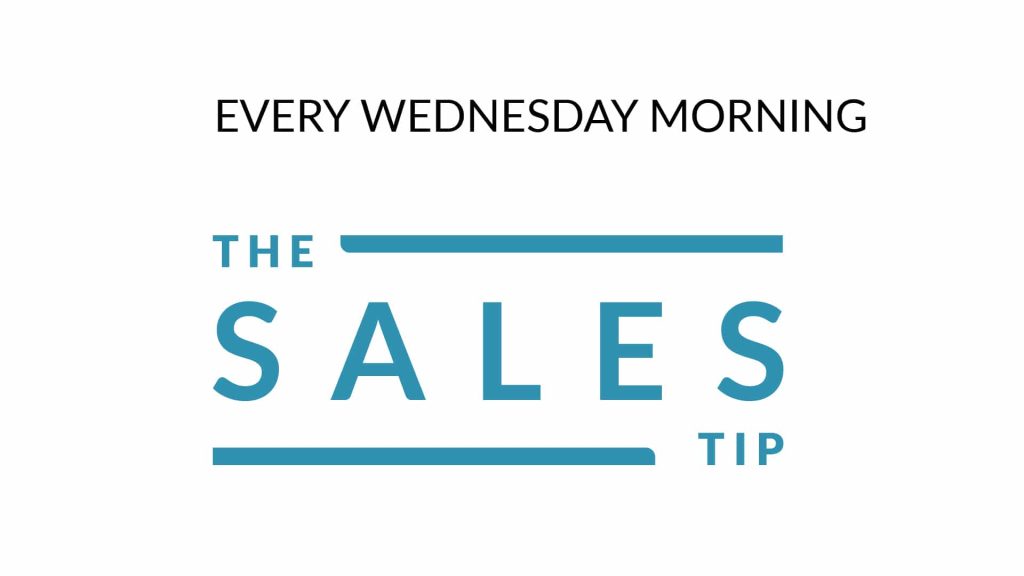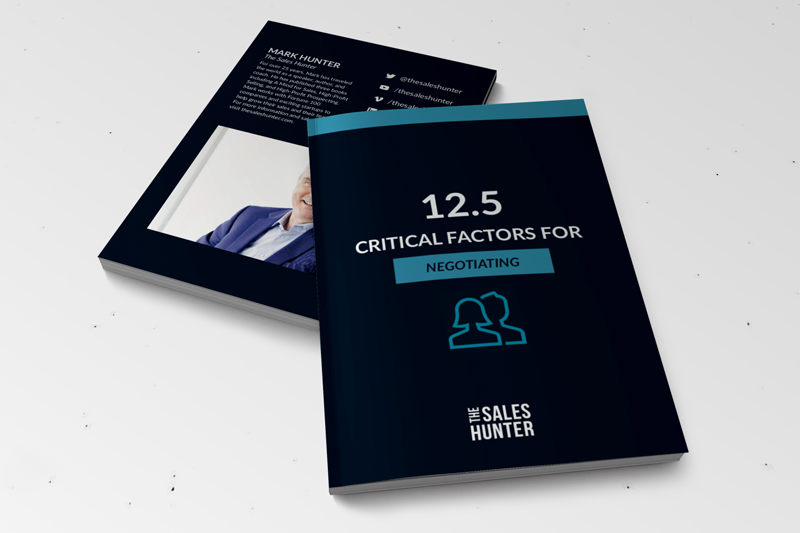In my latest book, A Mind for Sales, I talk about how to use the telephone for sales and specifically how to use the telephone for prospecting. I’ll share the 10 things you need to know as well as an 11th bonus item, but first I want you to click subscribe, so you can gain access to all of my videos and share them with your co-workers and friends.
1. Ditch the Pitch
This is not the time to sit there and read from your two to three paragraphs. If you really want to read the pitch, that’s fine, but you know what? You’ll come across as a call center person. You’ll be heard as another robo call, like an auto dealer. Guess what? The person will hang up on you very, very fast. Ditch the pitch, because what it comes down to be yourself and be relaxed.
2. Relax / Be You
Wow. You mean I can relax when I’m prospecting? Yes, you can! I want you to be you. Unless you’re the crazy aunt or weird uncle, I want you to be you. Now, what does that mean? It means allow a little bit of your personality to come through in your tone and so forth. Just relax. Hey, nothing you do in that phone call is going to change the course of mankind. You’re not going to solve world peace. You’re not going to prevent world hunger. The sun’s still going to come up in the morning. It’s just a phone call. That’s all, so relax and be you.
3. Know Your Goal
What’s the goal of the phone call? What do you want to get out of this phone call? It shouldn’t be just to make a phone call. More than likely, you want to just get to the next step because that person didn’t expect you to call. So, guess what? You’re probably interrupting them, and that’s ok! Why? Because you can help them. All you’re probably going to be able to do is secure the next step / the next call where you’ll be able to dig in a little bit deeper.
4. They Don’t Care
The person on the other end of the link doesn’t care about you, so it’s not about telling them how wonderful you are. No. Again, they didn’t wake up waiting for you to call them. Now they have their own problems, so you have to make one hundred percent of the call and prospect about your ability to help them with their issues. This means you need to do a little bit of research before you make the call, so you know something about them. I’ll get into more about that later on.
5. Voicemail
Let’s not kid ourselves – the majority of calls roll over to voicemail, so how do you respond to that? First of all, leave a voicemail, but don’t go leaving a 30 second message. So many voicemail systems translate the voice message into text and the person receives it as a text message, or some sort of a message. A 30 second message will look like a bunch of garbage and be deleted. Keep it short. Keep it tight. I talk about leaving a 12 – 15 second voicemail message. It’s tight. And make sure to be you on that voicemail again. Don’t read from a script B; put yourself into it. The voicemail’s objective is purely to create recognition. Are they going to call you back? No, they’re not going to call you back. But it’s OK. All you’re doing is preparing them for the next time you reach out to them.
6. Omnichannel
This means that you have to use every platform. Don’t think for a moment that the telephone is the only tool. Very few people use the telephone exclusively, but they fail to embrace it in conjunction with email and potentially text, depending on the market, social media, and the industry.
Use the telephone with other things. It truly works best when you can leverage it alongside another channel of communication. I say omnichannel, because you have to keep the message uniform. You can’t be spraying and praying. The message has to be tight and focused. Now, this does not mean that every message is the same. No. Every message is different, but they all wrap around a common theme.
7. Think Next Step
You always have to be thinking about your next step. Now, think about this for a moment. Is your next step the same as your goal? No, it’s not. Think next as your questions to ask if you engage the person in a conversation – do you know what your next question will be? That is knowing where the next step is. Know where you want to take the call, because otherwise you’ll get into a conversation and not know where to go. Be prepared, because it’s that one conversation that will have the deal eventually pay out or lose out. Don’t miss the opportunity.
8. Everyone Has an Insight
No matter what insight you heard, this is not the time to rule people out. People may say they’re not interested. Well, that’s just an insight.
They also may tell you that you’re bugging them and not to call them again. That’s just an insight. Everyone has an insight and accept it as just that – an insight. However, you don’t necessarily have to accept it as fact because, again, if you can help that person, you owe it to them to get back in touch with them. If they say, hey, don’t call me again, that’s fine. But still try to reach out to them by way of email.
Reach out to them, because if you know that you can help them, it’s your job to do so.
9. Connect the Dots
Now, you do this in several different manners. Maybe you’ve had a conversation with somebody else in that company, so you can connect that call with the previous call. Or maybe you’ve had a conversation with that person or an exchange on social media or something. Connect the dots back to those conversations. The more you can connect the dots, the greater your probability of success. Connecting the dots might even look like when they call you, say “Hey, by the way, I was talking to so-and so, and they suggested I call you.” Or “Hey, I know so-and-so and I know you know so-and-so.” In other words, do whatever you can do to point out the connections. That will increase the probability of continuing the conversation. By connecting the dots, you’re demonstrating that you’ve done your homework.
10. Only 4 Ways a Phone Call Can Go
There’s only four ways that a phone call can turn out, and you better be prepared for each and every one of them. So what are the four?
First, the decision maker could answer the telephone. That’s great!
Second, the gatekeeper could answer the phone. I call them door openers because it allows me to maybe have a conversation and learn some other information which will eventually help me when I do reach the decision maker.
Third, it just rolls over to voicemail which I talked about earlier, so leave a voicemail. It may go to an automated system, so what should you do when that happens? Stay on and listen to it, because remember how every automated system says their functions have changed? Be patient and listen to the entire directory. You might be able to find a way to gain the extension for other people that you can talk to in that company. That will help you reach out to people and make connections.
Finally, the fourth way is when you can’t reach anybody. If that happens to me, I go to sales and talk to somebody there. Be up front with them and say, “Hey, I’m looking for so-and-so. I’d like to talk to them. And I know you’re in sales, so I figured you’d answer the phone.” You’ll probably end up having a conversation with him/her.
Here’s the thing, though. You have to make sure that you offer them help. Don’t sit there and just abuse somebody you call. No, you always want to be the one to say, “Hey, how can I help you?” or “I’m sure you’re looking for customers. Who’s your perfect prospect? How can I help you?” I have found that reaching out to sales is many times a great way to reach a prospect. Another way is to simply just dial zero for the operator and see who picks up the telephone. Those are the four and only four ways that a telephone call can go.
11. BONUS!
Now, what’s number 11 – the bonus? Make the call. Somebody asked me the other day when the best time is to make the call. I told them right now! If in doubt, make the call too many times.
Often, I see salespeople saying they need to do a little more preparation and this and that. Well hey, if you’re selling billion-dollar deals, fine. You do a lot of research, but if you’re the average salesperson selling the average item, you don’t need to do more than about thirty seconds or maybe two minutes at most of research. Again, if in doubt, make the call. You have nothing to lose. Remember, if you can help them, you owe it to them to reach out to them.
I hope you found this list beneficial. Now click subscribe so you can get all of my videos. Also, jump over to my website – thesaleshunter.com and subscribe to The Sales Hunter University. I’ve got loads of great content out there, and it’s all just for you – the members of The Sales Hunter University.
Copyright 2020, Mark Hunter “The Sales Hunter” Sales Motivation Blog. Mark Hunter is the author of A Mind for Sales and High-Profit Prospecting: Powerful Strategies to Find the Best Leads and Drive Breakthrough Sales Results.












